DORISTON BC
-
Latest Comment Excerpt
Sorry, no comments have been posted
- Sorry, no links have been posted
-
All Posts: Browse by Month
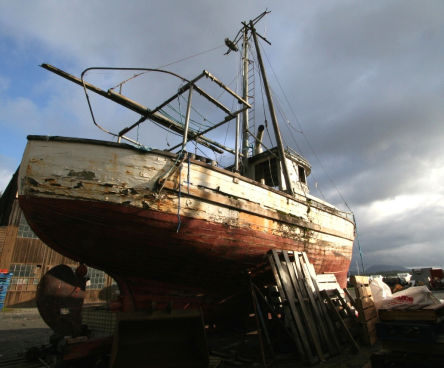
Sea Star 2 | Photo credit: Random Photo in BC Boats
-
Popular Tags
- 1889 1930s 1940s 1950s 1960s 1970s A.C. Benson Shipyard Aluminum Bartender Black Knight Boeing of Canada Shipyard Chelsea Lake Ernie Wahl Frank Fredette Frostad Boat Works Goudy & Stevens Harbour Boatyards Hull Lines Matsumoto Menchion Shipyard mini-cruiser Sea Spirit Star Shipyard Tad Roberts Timbercoast Troller Valerie K Walter McInnis Wanderer Wanderer Class cruiser William Garden Yorel
Bookmarks
- The Nauticapedia
- Westcoast Fisherman
-
Last 30 Posts
- DORISTON BC
- OF RATS AND MEN
- Cruising the West Coast of Vancouver Island by M. Wylie Blanchet.
- What is a “Bristol Channel Cutter”?
- SISTER KEELSONS
- A DECEMBER TOW
- WILLIAM GARDEN ON TUNNEL STERNS
- Saving Old Boats
- Scow Schooner hull design
- Geerd N. Hendal, Yacht Designer
- LEVIATHAN II TSB REPORT
- Framing Wooden Hulls With UHMW-PE
- LOOKING AT STABILITY CURVES
- BLUENOSE AND COLUMBIA
- TAD ROBERTS RECIEVES LIFETIME ACHIEVEMENT AWARD
- CAPSIZE OF THE YACHT BAADEN
- LAUNCHING CALCULATIONS
- Aluminum Tug Cruiser, T-Cup; a new design
- Sheerline Problems
- Change in Stability with Dinghy Aboard
- The Cogge Nonsuch
- Sakamoto Brothers Boatbuilding at Osland
- Gillnetters at Cassiar Cannery
- Post Class Patrol Boats
- CCG Hero Class and Safety Concerns
- Stability of Canadian OFSV
- BC Handliner, Luoma Loon
- Gillnetters at Cassiar Cannery
- Capsize of Refugee Boats in the Mediterranean
- Stability and the Leviathan II
-
All Categories
- BC Maritime History (42)
- Double-decked Seiners (1)
- Troller Design (3)
- Wood Fishboats (10)
- General Yacht Design (30)
- Maritime History (11)
- Power Boat (36)
- Current design (7)
- Design History (12)
- Heavy displacement (11)
- Ocean Cruising (2)
- Styling (3)
- Safety and Stability (14)
- Sail and Oar (7)
- R2ak (5)
- Sailing Vessels (32)
- general design (11)
- Ketches (7)
- Ocean Racers (4)
- Schooners (9)
- Uncategorized (8)
- BC Maritime History (42)
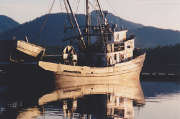
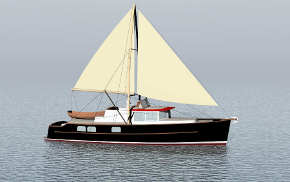
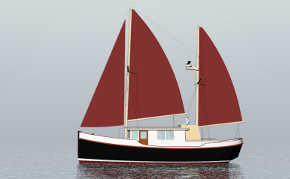
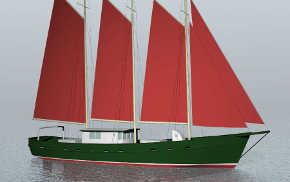
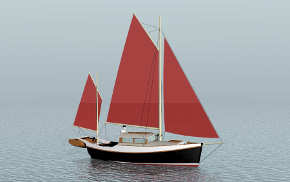
Echo and Orivo, trollers built on the beach at Doriston, a tiny village on the Sunshine Coast, by my grandmother’s fourth husband, Gunnar Gjerdin, and his brother Martin. It’s a poor picture but the only one I have. Echo is the tiny white boat, about 25′ long, and I would guess built sometime around the second world war, when this picture was taken in the 1970’s she was “Martin’s boat” but had never fished far from home. Pretty much every fish hauled aboard Echo would have been delivered to Egmont, four miles north through the Skookumchuck Rapids. The larger grey boat is Orivo, about 36′ overall and built in the 1950’s, in her Gunnar would travel the coast and he fished all over with nothing more than a compass and flashing sounder.
Tied outside Echo is the big abalone fishing boat Sailfish, owned by my aunt Zoe Roberts, and further out on the dock are the tugs Joe Drinkwater and Deerco.
Gunnar and Martin lived in Doriston most of their lives, their parents Oskar and Albertina having arrived with three small children from Sweden in 1923. They raised sheep, tended a large garden, and built and repaired boats, Oskar was locally famous for growing and curing his own tobacco. The three Gjerdin children, Gunnar, Martin, and their sister Harriet, attended the Doriston school before it closed in ’39. The boats are pictured in the tiny harbour that Gunnar and Martin built by hand, hauling rock for the breakwater in wheelbarrows. In winter the brothers logged, in summer they fished, and the huge garden was tended by my grandmother, Cherry. They built a dam up the hillside from the farm, and installed a pelton wheel for electric light. Gunnar was the raconteur while Martin was quiet, and their hospitality was widely known.
I only visited Doriston once, in the mid ’70’s, on New Year’s day. We’d come down from Lund on New Year’s eve, I with my Dad Lee on the Joe, Zoe and Rex with the Sailfish, and Richard and Pam with Deerco. We ran south in a flat calm with the three boats tied together, everyone below on Sailfish except me (the kid) steering on the Joe. Late in the day we untied from each other to buck the ebb through the Skookumchuck before dark. Dad and I went first, running the boat from the flying bridge to better spot the big holes, it was wild coming around the corner and facing a huge hill of water to climb, but we managed it, Sailfish and Deerco followed. We pulled into Doriston in semi-gloom, probably four-thirty in the afternoon. I remember Cherry’s gleeful, “Lee!”, I don’t think they had seen each other in maybe 20 years.
Six semi-strangers arrive on the doorstep at dark on New Year’s eve and what happens, a party of course. Within half an hour we were all sitting in Gunnar and Cherry’s snug living room with steaming bowls of clam-chowder, fresh biscuits, and Gunnar was breaking out the latest batch of home brew. There were some hangovers on New Year’s day, but much to explore and various chores to attend to. No doubt Gunnar, Cherry, and Martin lived hard lives in Doriston, but it surely contained some aspects of heaven as well.